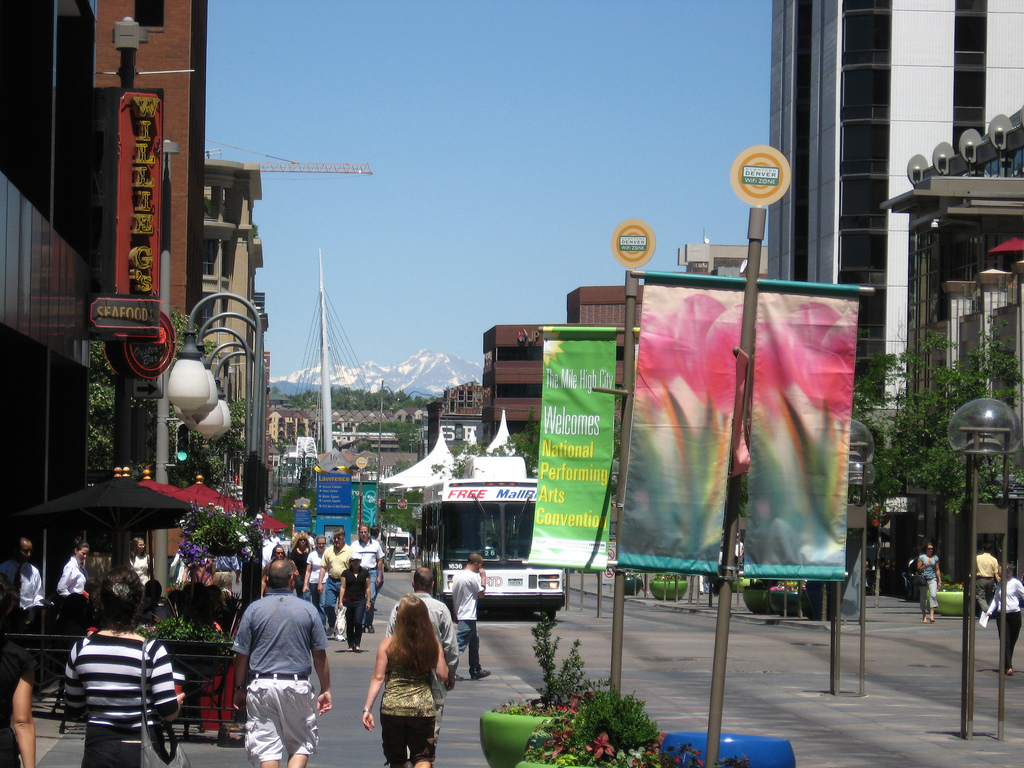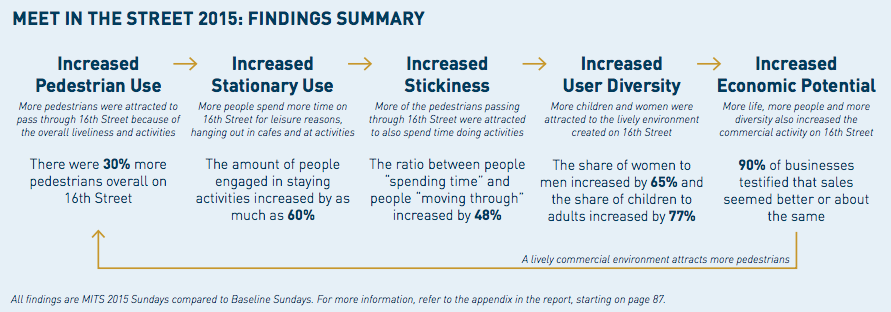The Key to a Successful 16th Street Mall Makeover: Busways on 15th and 17th

Hoping to create a better gathering place, city planners are seriously considering moving RTD’s free shuttle off the 16th Street Mall to create a pedestrian-only street. The concept has drawn all kinds of reactions, some of which pit transit against walking. But it’s not that simple.
If the city plays its cards right, three major streets could prioritize people and transit in a downtown that currently prioritizes cars.
As RTD General Manager David Genova wrote in the Denver Business Journal, maintaining the shuttle’s convenient service has to be part of any solution. That implies that pedestrianizing the mall would mean running the shuttle in a loop on 15th and 17th streets. And to maintain the shuttle’s 90-second frequencies on those streets, the city would have to truly prioritize buses.
Imagine physically separate transit lanes on 15th and 17th that help not only the shuttle but other bus routes bypass traffic congestion.
“I think one of the biggest impediments to this process is that folks want to simplify this question as ‘shuttles or no shuttles,’ and it’s just so not that,” Denver Planning Director Brad Buchanan told Streetsblog. “Shuttles fulfill a really important piece of mobility downtown. We can’t damage that.”
Buchanan said the project is the most complex he’s ever worked on because the mall means so many different things to so many different people.
For many, it’s a transit route. The shuttle handles 45,000 boardings every weekday. It links Civic Center Station and Union Station, connecting to other transit routes and workplaces along the way, making it a vital service for commuters.
For business owners, the mall is a livelihood. The more time people spend there, the more money they’ll spend too. But a study by Gehl Architects says just 1 percent of people “linger” on the mall. That’s a big missed opportunity for local merchants. According to Gehl, merchants would benefit if buses weren’t shuttling people past stores and restaurants.
Gehl, the Downtown Denver Partnership, and Community Planning and Development tested that theory for five Sundays last summer. During “Meet in the Street” days, RTD operated its buses on 15th and 17th (with weekend headways between 3 and 15 minutes). The demos opened up the street, which became a vibrant place for people: More lingering, more families, and more retail sales.

While those were successful temporary events, to replicate those changes permanently, planners will have to figure out a way to operate the shuttle on other streets. Buchanan said the city will dive deeper into those questions when it launches its new Downtown Multimodal Access Plan this summer.
Another wrinkle: RTD’s new rail lines will bring more passengers to the shuttle, but the exact number remains to be seen. The A Line between Union Station to DIA opens next month, and three other lines open this year. According to RTD, by 2017, 80,000 more people will pass through Union Station on a given weekday.
“That’s part of the discussion and that’s why this evolutionary approach to city building and planning is so important,” said John Desmond, executive vice president of the Downtown Denver Partnership. “We’re seeing things change not only with the RTD commuter rail lines but with other things on an ongoing basis.”
More Meet in the Street events are planned for this summer. Piloting dedicated bus lanes and testing shuttles on 15th and 17th during weekdays could be in the cards too, according to the Gehl study.


